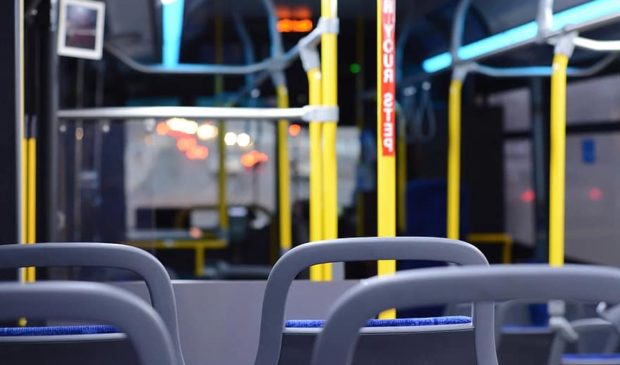Newsletter Signup
The Austin Monitor thanks its sponsors. Become one.
Most Popular Stories
- Cap Metro to shelve 46 new electric buses for a year after manufacturer bankruptcy
- Texas Attorney General Ken Paxton sues nonprofit that serves homeless in South Austin
- Mobility Committee hears public concern regarding expansion of MoPac
- City-owned Austin Studios found to have generated $2.6B in economic impact
- Red River music proponents see city funding as sign of support, progress
-
Discover News By District

Capital Metro committee favors contract outfitting transit vehicles with modern surveillance systems
Thursday, July 16, 2020 by Ryan Thornton
The Capital Metropolitan Transportation Authority’s Operations, Planning and Safety Committee voted Wednesday in favor of a nearly $3 million contract with Luminator Technology Group to install real-time video recording systems on the 272 vehicles not yet using the surveillance system.
“The video systems on our revenue vehicles are critical for safety and operational support,” said Darryl Jamail, the agency’s director of public safety and emergency management.
Capital Metro is already using the Luminator system on many vehicles, but Jamail explained that 272 of the agency’s transit vehicles currently have no video management system at all or have systems that are past their end-of-life cycle.
Bringing the rest of the fleet up to speed will allow the agency’s control center to monitor and share video feeds under one system. Jamail said the added flexibility and efficiency will ultimately result in a better customer experience, enabling the agency to keep a closer eye on passenger loads and disruptive events.
Although the modern video system has many benefits, Jamail told the committee that the main goal is improved safety for vehicle operators and customers.
The video systems may also help the agency respond to criminal events and safety threats as they occur rather than monitoring vehicles with physical enforcement as the city’s transit network grows. In the wake of renewed calls for equitable solutions to flawed criminal enforcement policies, Dorothy Schulz, co-author of a 2016 report on transit system surveillance, told Smart Cities Dive last month that modern camera systems can be a powerful alternative to transit policing as long as they are “monitored constantly to watch for potential crimes.”
Jamail said the contract with Luminator corresponds with a recent contract with Convergint Technologies to create a one-access video software platform for easier sharing and retrieving of surveillance footage.
“Currently, our enterprise system requires separate log-ins to all these different systems and that is time-consuming and cumbersome at times,” Jamail told the agency’s board of directors last month. “And it’s the same situation that we face with our regional public safety partners, as more and more of us share videos. Currently we’re sharing with the Texas Department of Transportation and Austin Transportation Department, and those require separate log-ins as well.”
The Luminator contract will appear on the consent agenda at Monday’s board of directors meeting. The contract includes a base total of $557,396.78 in the Fiscal Year 2021 budget for video systems on a portion of the 272 vehicles. It then contains a series of options totaling an additional $2.4 million that the agency can initiate as funds are available over the course of the next 18 months.
Capital Metro is preparing its Fiscal Year 2021 budget with the long-term negative impacts of Covid-19 in mind, but the agency has created a separate “recovery budget” with higher revenues and spending in case the local economy recovers sooner than expected. Accordingly, the Luminator contract allows the agency to spend the entire amount of the contract over the next fiscal year or spread it out over an 18-month period.
“Our total planned spending on vehicle camera systems is still the same amount,” said Dottie Watkins, chief operating officer. “The base option for this contract is in the base budget; the future options for the full replacement is in the recovery budget.”
The Austin Monitor’s work is made possible by donations from the community. Though our reporting covers donors from time to time, we are careful to keep business and editorial efforts separate while maintaining transparency. A complete list of donors is available here, and our code of ethics is explained here.
You're a community leader
And we’re honored you look to us for serious, in-depth news. You know a strong community needs local and dedicated watchdog reporting. We’re here for you and that won’t change. Now will you take the powerful next step and support our nonprofit news organization?









